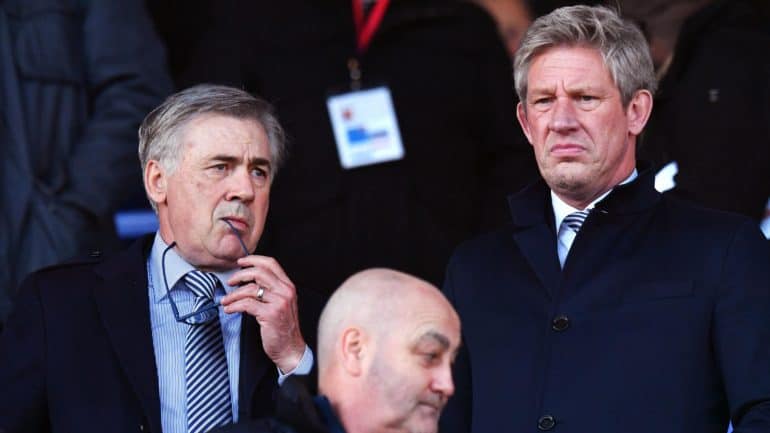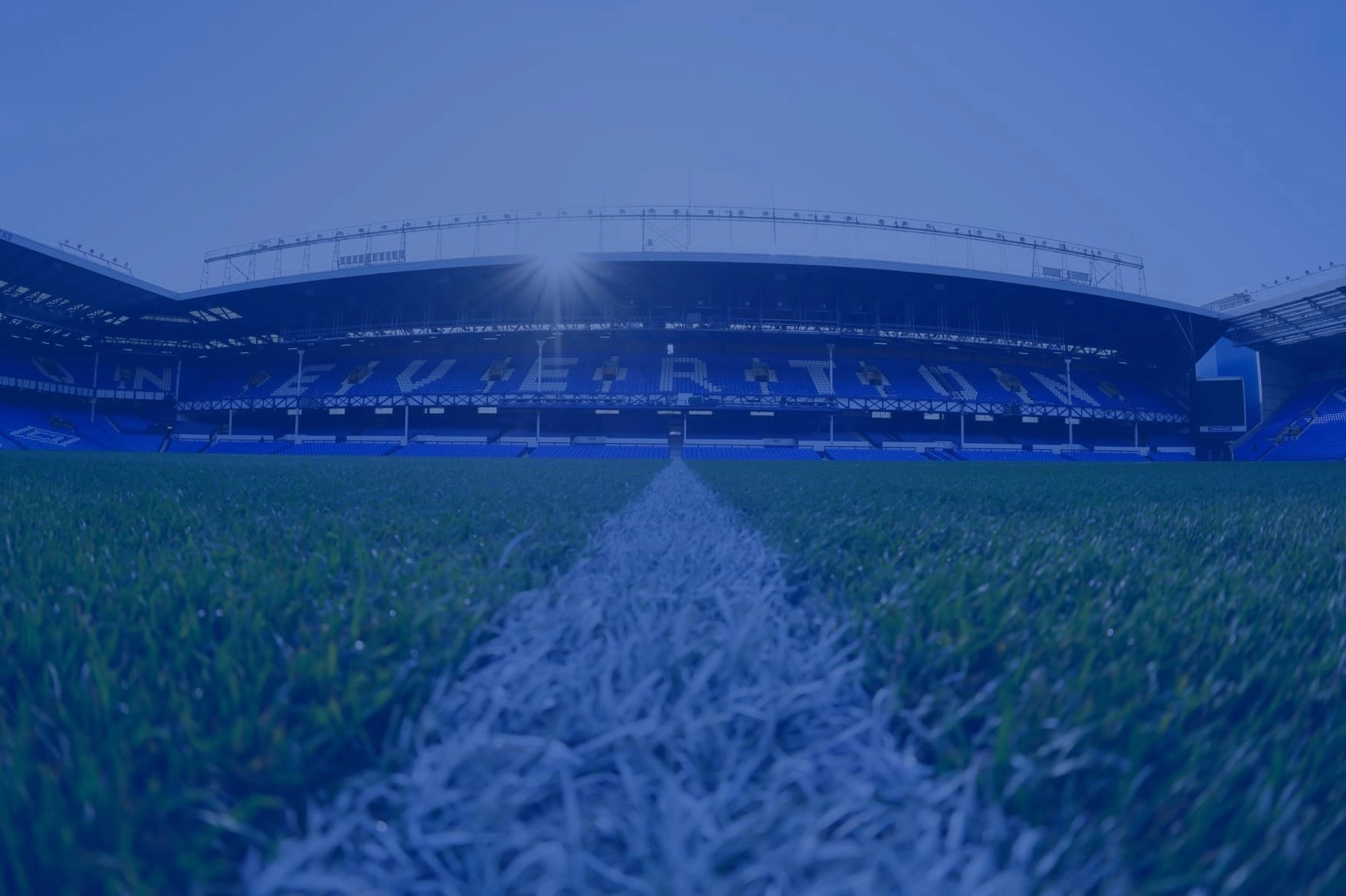“If we think like the Yankees in here, we will lose to the Yankees out there”
Few topics seem to invoke the frustration and polemical nature of Everton’s support base as the question of age of signings. At the point of writing, Everton are linked heavily with 3 players aged 27, 29 & 29 respectively which has re-energised an existing and worthwhile debate. Without trying to overly simplify the different perspectives, on one side you have those who state that due to footballs financial regulations but also for good governance Everton have to primarily (if not exclusively) sign players who are under 25 years of age, with the intent of improving them and moving them on for a higher price. This is balanced again a more pragmatic wing of the fanbase who would prefer to see the club sign the best players available for the team, even if it means they are older and may not have much “sell on value”. While it may be an over-simplification, as broad working definitions they seem to be the two camps. The reality to me is more complex and the answer to the initial question posed- as with many a worthwhile discussion is more of a “possibly” than a simple yes or no. In truth I haven’t made my mind up enormously in either direction, though feel it beneficial to perhaps draw out some of the more complex themes on either side of the debate.
If we begin at the start, in general I am in favour of a broad approach that avoids signing older players. Up until this summer 2 traits were fairly consistent in football. The first is that football players values have increased substantially above the standard rate of inflation (at something like 50 x over the last 30 years and an average of around 14% per year). The second is that the unique way football accounts for value tends to benefit holding players for around 2-3 years before selling them- nominally a players book value (how they are recorded in the accounts) is depreciated over the course of a contract. Most footballers tend to sign 4-5 year deals, so lose 25% of their initial value each year you hold them.
In an era where more stringent financial regulations have come into the game (and thus all sides needing to find loopholes to exploit in order to allow for substantial spending) the paradox of on the one hand a players accounting value decreasing but their actual value increasing leads to a sweet spot if you want to engineer profitability (which is needed if you then want to spend more money down the line).
In simple terms, if you buy a player for 10, put him on a 5 year deal he will lose 2 of value for each of those years (10/5=2). After 3 years of keeping the said player for 3 years his accounting value sits at 4, yet if a standard level of inflation (14% year on year) exists then if he neither gains nor loses value to the market his market value would be around 15. If you sell at that point, you show a 110% profit. If you are able to buy a younger player, and increase their performance level and output to increase their value on top of the inflationary measures, that profit rate grows substantially higher, and ultimately keeps any concerns of FFP off your back. In essence, you want to buy players who at least hold, if not gain value and move them on fairly regularly. The players that tend to hold value best will be players under the age of 25 so if you were building a strategy you would want to target this age group and sell semi-regularly. This is a model that lots of continental teams adopt and in honesty has allowed them to outperform many English teams with greater resources.
There are of course numerous drawbacks with this model. Firstly it requires patience and secondly it requires an organisation to accept volatility. You are going to be turning your squad over fairly regularly and it’s therefore unlikely you keep a settled winning team on the pitch for any period of time. Ajax, last seasons CL semi finalists had to sell key players and subsequently struggled to have an equivalent impact. The same fate will likely befall RB Leipzig this season. Indeed Monaco, who made it to a final some years ago very nearly got relegated out of the French league in the following season, following the sale of hundreds of millions of pounds of talent.
PL teams have an advantage over European teams, in that a somewhat equitable distribution of TV funds provides substantial income though the disadvantage is it acts as an enormous risk point for clubs falling out of the league and is an impediment to the sort of risks European teams are more able to engage in. This is added to, by the more competitive nature of the league and the real prospect that for sides outside of the top 6 if they take too many risks in turning a squad over and it goes wrong they could quite easily be relegated and the damage from this would be far greater for their European counterparts. In essence, if Leipzig sell 7 or 8 of their best players, they may slip to 11th or 12th while the new team beds in. For Ajax in Holland they may slip to 4/5th in their league. It’s far from ideal but it’s not catastrophic in the way relegation is. While these are the more structural dilemmas a club like Everton face. To stick or twist, and how much can you risk in the short term for a pay off in the medium term. The greater risk you take, in reality the potentially bigger pay off can come.
There are also unique factors that surround Everton as an institution that compound the broader challenges. As a fanbase there is an expectation level that is simply not matched by the commercial performance of the club. While Everton fans like to see ourselves as part of the elite, in terms of commercial revenues generated we are a long way off the top 6 teams. This is refracted by wage spend-even with the splurges there have been of still being substantially behind the top 6. In real terms, the club will be closer to the side 16th than 6th. In the end, you do sense the divergence between the two will be met, either with a gradual lowering of expectations, or an improvement in commercial performance, but there is a realistic question of how long the club can realistically expect top level performance on very much a mid table budget.
While there has been some discussion above on volatility and it’s dangers, patience is also the key spin off from this. Everton fans are now quite impatient. In his 2 years at the club Everton were 2nd and 6th lowest in the league for youngest teams put on the pitch yet very little sympathy was given for this to the manager. Perhaps more important, the owner himself seems impatient, having sacked 4 managers in his 4 years here. While some lip service is occasionally paid to the ideas surrounding Moneyball and sustainability the practical decisions on the ground are, if you haven’t delivered with 18 months (maximum) then you will be removed from post. When both are factored in, why would any manager, coach or Director of Football work to plan that may start to pay off in 3-5 years? Ultimately I would suggest this is as big a driving motivator of targeting older players than not comprehending the basic principles as outlined at the start of the article.
On a purely personnel level, I do also have some fear, that a club that has struggled to replace Stones, Lukaku and Gueye in consecutive summers would be able to deal effectively with a much higher turnover of players-whereby this sort of approach become more the norm than an exception.
Quite what emerges in it’s place is obviously far more difficult to know. If we spend as the top teams do, we will likely lose as they have more resources. However on quirk of the moneyball principle is that it is not so much about just buying younger players, but more about finding value where others don’t see it. This has commonly been done from buying younger players, but it’s a mistake to assume this is the only way it can be done, or that buying younger players is moneyball.
We had discussed above the 2 different types of value a player holds (value to the market, and value from an accountancy perspective) but there is a 3rd measure-namely the value a player holds on the pitch. While from an accounting perspective he runs to 0 value at the end of the contract, and we have seen a player loses value heavily as they approach the end of their career (to the point where they have no real transfer value) older players are not worthless on the pitch. This season a 33 year old Messi scored 33 goals while a 35 year old Ronaldo scored 37 goals. These two greats are perhaps extreme examples but in recent years we’ve seen messrs Kompany, Silva and Fernandhino play an integral part in title success for Manchester City and even this season the PFA player of the year was Liverpool captain and 30 year old Jordan Henderson. Players worth on the pitch- and perhaps in the dressing room does not just stop at the age of 30.
Instinctively, when you see different valuations of a commodity throw up different results you ultimately have opportunity to grow value. One trend we have seen over recent years, as Financial Fair Play has kicked in has been the period with which a player starts to lose value, and the speed it happens have become sharper and earlier. Even as little as 10 years ago it tended to be players over 30 who ceased to have a transfer value and that slowly rolled back to anyone approaching 30. The recent economic crisis seems to be pushing this back to the high 20’s in age, but also showing that once players turn 26 values start to depreciate in real terms. For a club like Everton, with an experienced manager who has shown himself capable of working with older professionals due to his outstanding mna management skills, there too could be somewhat of a gap in the market.
The glib reality is, for players of the ability of Allan, James and even Doucoure if the equivalent players was available at the preferred age of 23/24 Everton would not be able to afford the player, not would the player have any interest in joining a side who to date have only sporadically appeared in European competition. The choice for the club is, do we sign a better player who is on the decline, or an inferior player who could improve. It’s a philosophical question where it is hard to determine a clear right or wrong answer- though people will ultimately have their own personal preferences. At this point, I would urge supporters to try to judge each deal on it’s merits, and acknowledge that while there may be an ideal way to conduct business, unique pressures faced by the club may make it difficult to pursue that course of action for the foreseeable.



